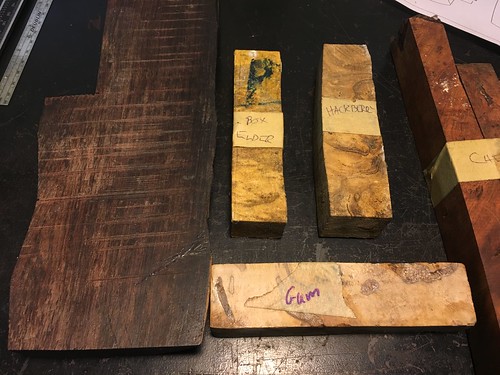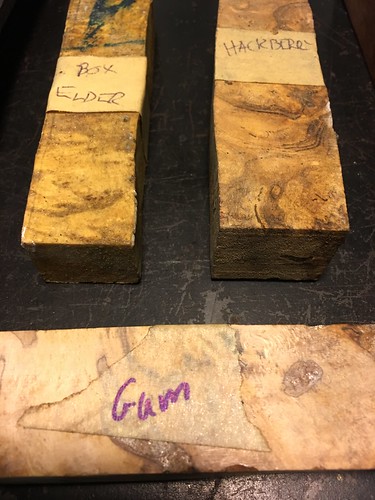- Joined
- Nov 15, 2005
- Messages
- 1,198
Hey guys, I have some old pieces of labeled wood that were given to me in 2006 by an acquaintance who was a knife-maker. They've been sitting in a barn since then. My parents recently found them and said "do you want these?" (hah!)
These pieces include:
I found an old forum post that said Cherry, Gum, and Box Elder need to be stabilized. Not sure about HackBerry.
Is there a way to visually tell if the gentleman who gave them to me had bought them stabilized?
Thanks,
J. Keeton


These pieces include:
- Gum
- Box Elder
- HackBerry
- Cherry
- and a large unknown block!
I found an old forum post that said Cherry, Gum, and Box Elder need to be stabilized. Not sure about HackBerry.
Is there a way to visually tell if the gentleman who gave them to me had bought them stabilized?
Thanks,
J. Keeton


